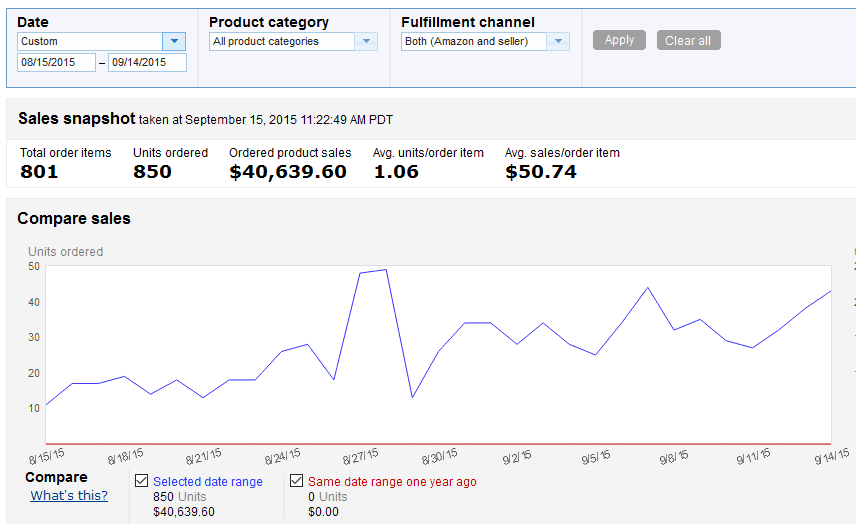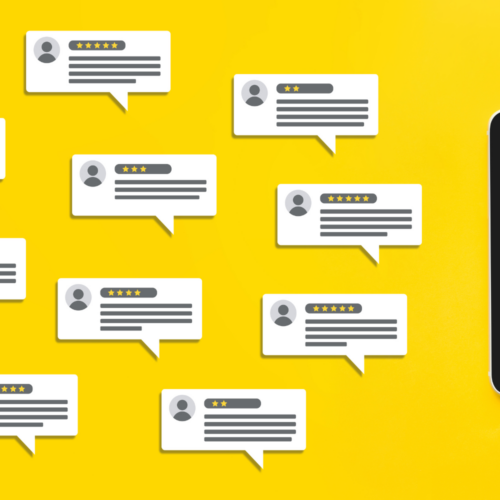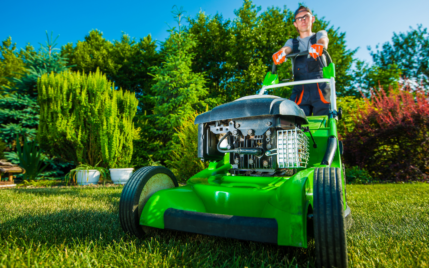1 Of Me Amazon FBA Success Stories: How I Sold $40,639 Worth of Physical Products in 30 Days

When you buy something through one of the links on our site, we may earn an affiliate commission.
I want to share with you my experience as an Amazon seller – just one of my Amazon FBA success stories and one of many out there.
Sharing income from my business kind of eats me up inside. Part of me hates doing it, because I have a lot of family and friends that read my blog. Talking about income openly with people you know personally is always a taboo subject.
On the other hand, I know how much reading income reports on other blogs inspires me to grow my business. For this reason, I know all of you reading (that I don't know as personally) can gain some motivation from these types of blog posts so I don't mind sharing.
But, if you have met me in “real life”…please stop reading this blog post! 🙂
Sharing income always works as a way to really get people's attention. For example, I could write the most elegant post about my Amazon FBA strategies; however, its not until I say something like, “and these strategies net me $10,000 a month”…that people's ears really perk up.
So, as I share this income report today, one of the main purposes is to concretely demonstrate that Amazon FBA sellers are the real deal and it can be a great opportunity for financial freedom. Running an Amazon business is a VERY real business, and I am seeing very real income from the business model.
I'm not saying that everyone should jump on the FBA bandwagon, open a business account, and start selling on Amazon; I'm simply saying that it's not some sort of scam (but please do read this to avoid any Amazon automation scam).
Amazon sellers are making very real money on Amazon, and there are plenty of worse businesses that you could start! So with that caveat…let's look into some numbers.
Amazon FBA Success Story
Here is a breakdown of what happened!
Amazon FBA Revenue and Profit Numbers
Let's jump right into it, shall we? My revenue number from my physical products on Amazon are below, then we can discuss what's been going on with the business.
Here's a screenshot from the Amazon seller app showing the earnings over the past 30 days

I am as floored as you might be when seeing this revenue screenshot from the Amazon seller app, but it's true. My Amazon FBA business sold $40,639.60 worth of product in 30 days!
What about profits?
Having revenues of over $40,000 does not mean I put that much into my business account though. When you factor in manufacturing costs, shipping costs, returns, amazon fees, and more…the actual net profit an Amazon seller takes home is much less.
Without getting overly detailed or exact, the net profit from my private label Amazon sales is right around 35 to 40%. This means the net profit from my Amazon FBA business in the past 30 days was around $14,223 to $16,225. Again, this isn't exact…but it's going to be fairly close to that. (I haven't had a chance to do full accounting, so that's why these numbers are rough). Still, not bad for 1 month.
Calculating the net profit is actually quite difficult for Amazon sellers to do on an ongoing basis though due to returns, promotions, and constantly reinvesting in new inventory. Oh, and like other any new Amazon seller, I also change the pricing on my products throughout the month to test different price points.
Profit Margins
Despite the difficulty of getting an exact profit number each month, I have sat down and calculated the profit margins on each of my products ( so I know how how much money I make on each sale).
I now have 5 products up and selling on Amazon. Each help me grow my successful Amazon business. And below is the rough profit margin I earn on each product.
1st Product: 46%
2nd Product: 23%
3rd Product: 38%
4th Product: 43%
5th Product: 29%
Overall, I'm really happy with revenue and profits generated with this business! Can you believe that I've only been doing this for 6 months?
I listed my very first product for sale in March 2015, and just six months later I was pulling in $40k per month. I'm living proof that this is a viable business model. And this is by far the fastest growing business I've ever started (although still not the biggest).
Growth Potential
I'm already very impressed with how quickly this business has grown; however, the potential for growth is still significant.
I can do 2 things to grow this business even more:
- Increase the Amazon sales of my existing products
- Manufacture and start selling new products
In terms of selling more of my own products, I really haven't done any Amazon PPC yet. I've only done paid marketing for one of my products so far because it wasn't selling well initially. The other 4 products I have not spent any money on PPC ads and yet I still made a very profitable Amazon business.
If I did more advertising like other sellers, I could easily grow my successful Amazon business even more. However, the primary reason I haven't been doing paid advertising is because I'm struggling to keep my product in stock as is. Paid ads would just increase my expenses…until I can order a large enough batch of inventory to make it worth it.
That day is coming soon…(see below).
Holiday season
The holiday buying season is coming, and I fully expect this will significantly increase my Amazon sales volume of my existing products for November and December. I ordered huge batches of inventory for all products of my own brand over a month ago. And they are either being shipped now, or are still in the process of being manufactured.
To give you an idea, for most of my products I had an initial order of about 500 units. I sold out of these 500 units after 45 to 60 days approximately. I've now ordered close to 2,000 units of each product in preparation for the Holiday season where Amazon sales explode.
So, I would have to nearly quadruple my Amazon sales to run out of stock during the holiday season. I don't think that will happen; however, double is probably not out of the question ($40k x 2 = ????).
November and December should be really good months. 🙂
New Products
I've received samples of 4 or 5 products over the past couple of weeks from China. I'm ready to expand my line of products even further. I mean, why not? How many products you'll want to carry is up to you though.
So far, I have 5 private label products and every single one of them is now selling well and turning a profit. Initially, I thought I had a couple of dud products…but I was able to turn them around.
The 2 new products I'm adding both have the potential to be my top selling products. Or, they could also totally flop.
I will be working on finalizing a couple of things (branding, additional samples) with my manufacturer over the next week or two. Once I receive some finalized samples with my branding and small changes, I will give the green light to manufacture a batch for both products.
I should be able to get these listed on Amazon just in time for the big buying season (December).
Then towards the end of the year if my existing products are still selling well, I'll look to add a few more products early in 2016.
Inventory Problems
It's hard to call it a “problem” when people are buying your products so quickly. However, I've been unable to keep a stock of inventory of my products (it's just the way it goes sometimes with online arbitrage).
In all cases, I have simply underestimated demand. I will say that it's not really my “fault”, because you really don't know until you actually start selling a product. This is still a brand new business, and I'll have better data going forward.
For example, when I ran my initial batch for 4 of my products (out of 5), I ordered 500 units EACH.
I had no way of knowing if this was too much or too little. At first, they might only sell 1 unit a day…so it seems like I can wait 500 days!
However, after a couple of weeks, the sales started escalating quickly for most of the products. They started selling 10 to 15 units a day. Suddenly, I was faced with knowing that in about 2 to 3 weeks I was going to be out of inventory.
You must react fast
It's a really good problem to have, but there was NO way to predict how well these would sell.
So, I immediately ordered nearly 2000 units each for the products. However, it takes easily 30 to 45 days to manufacture, 2 to 3 weeks to ship the products to the US, then another week getting the product shipped and unpacked by Amazon.
So, even though I reordered new inventory as soon as I saw things started selling…it takes 2 to 2.5 months from order date to actually getting the new stuck up and selling on Amazon. Unfortunately, knowing that you are going to run out of stock in 3 weeks, means you are going to be out of stock for at least a month and a half.
As a result, I'm basically out of stock at the moment for my products. I'll have one of my products in stock later this week (its about one day away via UPS from Amazon as I write this). My other 4 products will be in stock in 2 to 4 weeks.
Because of this, my earnings for October will not be as much as the screenshot above…but November and December should be huge!
Lessons Learned with Amazon FBA [To Help You Join The Many Amazon FBA Success Stories]
Obviously, I've learned a little bit about inventory issues. They aren't fun!
Inventory – Order Small at First
However, I actually think I would give the advice that you should do what I've done with your initial orders. I would order as small a batch as your manufacturer will let you get away with on your FIRST order.
By ordering small, you can make a much smaller investment and limit your downside. This allows you to test a market and see if your product will really sell.
Amazon is HUGE
Another lesson, I'm continuing to learn is just how massive the Amazon marketplace is. I'm constantly shocked at how many people want to buy my products!
And the thing is, I'm still not even one of the best selling products in my category. The potential of the marketplace just on Amazon is SO big…it's a bit mind blowing. And although there are many factors to consider – basically anyone could create an Amazon success story.
Keywords Make a Difference [The Foundation for all Amazon FBA Success Stories]
I've also learned the importance of keywords in Amazon listings, but that really deserves an entire post on it's own. Basically, I made some keyword changes for the titles and descriptions of my “dud” products, and they quickly turned around and started selling well.
Our Separate Website is Helping Increase Value of Business
I should also make a quick note that we are actively building a separate affiliate website in the same niche as our Amazon products. Which is a game changer, and one of the many factors owing to our success. The purpose of this website is 2 fold:
- Generate traffic outside of Amazon (primarily from Google)
- Sell more of our own products and to sell affiliate products.
We are taking a very long tail keyword approach (as outlined in my last post), and we are seeing encouraging results already. The natural search engine traffic from Google is on a nice growth curve, and we've made about $135 in extra income from affiliate commissions from our site in September so far.
We also sold 4 units of our own products, which equates to a little more than $200 in additional revenue. The potential for this site is tremendous and living proof that this is a great option for Amazon sellers.
We will be changing to a more professional WordPress theme with the help of a web designer and putting a lot of effort into it this year.
Once you're able to and have a system in place you should outsource ‘busy work'
Like most people, my goal in every venture and side hustle is to not just make extra income but to enjoy being my own boss and ideally grow them into a life changing business exit.
And once you see in your Amazon seller app that you're making enough to quit your current job, the best advice I can give to new sellers hoping to grow is to prioritize your time. This means hiring virtual assistants from other countries to do the busy work that will eat up time best served strategizing your next move.
For instance, my supporting niche sites. If you'd like to do the same but aren't familiar with building sites you can consider hiring a web designer to get it off the ground.
Sure there is free training from some YouTube video out there but you need to consider how much time you have in a day and how to spend it the best way.
Plans Going Forward [To Grow My Amazon FBA Success Story]
Here's a brief list of my plans going forward:
- Get inventory re-stocked and ready for big holiday season
- Source inventory to add 2 new products before the year end
- Optimize/tweak listings for additional long tail keywords that I can potentially rank for
- Possibly add a couple of additional products early next year (based on how well my existing products are selling).
- Consider hiring some virtual assistants to help grow the business with sourcing efforts and assessing other categories (get ideas with our list of virtual assistant websites)
- Start using Amazon PPC if I can schedule my inventory better.
- Continue building a website based on my product category. The website is already seeing strong results. I see TONS of potential for selling my own product, and also making some serious affiliate commissions in the market.
- Start creating truly unique products/inventions next year with the funds I'm building up through private label products currently. I already have a list of ideas.
Is Amazon FBA Worth It?
When I first wrote this post, I had about 6 months worth of experience with Amazon FBA. Now that I'm older, wiser, and sold out of the Amazon FBA business, I'm able to reflect a bit.
In short, I had a lot of good things come about from my Amazon FBA business. I made a pretty decent chunk of change, I learned a lot, and I feel like I grew as a person.
That being said, I don't think that Amazon FBA is for everyone (but there are Amazon FBA coaches to help). There are so many factors that lead to success or failure in this game.
There were hard days, the income was anything but consistent, and Amazon can be a pain to deal with for most people.
Here are some of the things I think:
Benefits of Selling On Amazon FBA
No doubt that selling on Amazon has some strengths that niche sites can't match. Niche sites often take months to get off the ground. My Niche Site Project 4 didn't earn much of anything before month 6. And since I've had a little experience with niche sites, I think my results aren't very typical.
Amazon isn't like that and there are plenty of Amazon FBA success stories to prove it.
It does take a little while to find a profitable product, source it, and get it to Amazon. But once you've got it listed, you can start making a profit that very same day.
A viable business model that can be as simple as you want it to be
I also think the simplicity of selling on Amazon FBA has been a bit of a game changer for me. With niche sites, you have to select a great hosting company, find your niche, write a lot of articles, do your SEO, build backlinks, manage social media, and more.
Amazon FBA involves picking a product, finding a manufacturer, and getting your “SEO” right on Amazon. Write your product's headline and description, you're pretty well off to the races.
Of course, Amazon FBA can be more complex. And to become a Amazon success story, you can do giveaways, add follow ups to turn buyers into reviewers, and more. But the basic premise is a lot more simple (and faster, and easier) than niche sites. There's just a lot less learning curve with FBA.
Another thing that adds to the simplicity of FBA is that Amazon takes care of a lot of the hassle of the business model for you. As an Amazon seller, you never have to worry about shipping to customers, collecting customer information, or building trust.
Amazon handles all of that. They even take care of some of the return process for you. Compared to something like dropshipping, Amazon makes a lot of things pretty easy.
But that's not to say that FBA is perfect. It has one major drawback:
Disadvantages of Amazon FBA [What most Amazon FBA Success Stories Won't Tell You]
The greatest strength and weakness of Amazon FBA is the same mighty force: Amazon itself.
They make it easier than ever to sell on a platform that your users already trust. But they can be an enormous pain to deal with.
I never had any significant problems, but there are horror stories of other new sellers getting their accounts banned. Amazon has a reputation for being about as clear as mud when it comes to communication. If your product gets too many returns, if someone leaves a super nasty review, you could end up banned from Amazon. Just make sure to read and follow the Amazon FBA guidelines.
Many people will never have significant problems with Amazon though, so this shouldn't keep you away. At the end of the day, Amazon wants you selling on their platform and they're willing to work with you on some stuff. And if you do get banned, you can always contact them and resolve the issue.
Another downside of Amazon is that there is a lot of competition. I never had a ton of luck with “generic” products. All of my most successful products had a unique twist to them. For example, if I was selling a showerhead, I might add a unique way to pattern when the water comes out. If I was selling a computer mouse, I'd make it more comfortable.
The Best Combination Of All
I talk a lot about niche sites here, and I've talked a lot about FBA as well. But if I were to start from scratch, I would do both at the same time. This is what I did with my FBA business before I sold it: I had a website in the same niche as my Amazon FBA business.
This website drew in organic traffic to buyer guide type articles ( best X for Y) and when I had a good opportunity, I promoted my own product. This allowed me to make more Amazon sales of my products and earn commission from my competitors.
Yep, when visitors bought other things on Amazon, I earned from that too!
This is the profitable business strategy I would pursue if I were starting all over. For a life changing business opportunity, I would start with either FBA or a niche site, then expand to have both at the same time.
This strategy helped me sell both the site and the FBA for $425,000.
One of Many Amazon FBA Success Stories
As always, I would love to hear your thoughts or questions on the subject. Obviously, there is SO much more depth I could write about in regards to strategy and other details that are helping this become a profitable Amazon business.
However, I wanted to simply share about how my profitable business is growing and some of the lessons learned so far.
Want to see one of my favorite tools for building an Amazon Business to reach financial freedom? See my Jungle Scout review here.
Want to learn step-by-step how I built my Niche Site Empire up to a full-time income?
Yes! I Love to Learn
Learn How I Built My Niche Site Empire to a Full-time Income
- How to Pick the Right Keywords at the START, and avoid the losers
- How to Scale and Outsource 90% of the Work, Allowing Your Empire to GROW Without You
- How to Build a Site That Gets REAL TRAFFIC FROM GOOGLE (every. single. day.)
- Subscribe to the Niche Pursuits Newsletter delivered with value 3X per week
My top recommendations


















111 Comments
Conversation
Fantastic job Spencer! Christmas is going to be HUGE for you I think.
Thanks Dave! I really think its going to be a great november and december for sure.
Inspiring post Spencer 🙂 I’ve jumped in this business couple of months ago and doing well..though my numbers aren’t as big as yours. I’ve a question though-
How did you do the competitor analysis? Are there other sellers selling the exact product? If so, how many? or did you completely overlook it?
May be a detail post on this would be highly beneficial.
Hey,
Anisul u are doing Amazon FBA from Bangladesh ? Wow great how you are doing it man . Need to talk with u
Competitor Analysis: I look to see if “weak” types of listings are ranking on first page of Amazon. If someone with low number of reviews (less than 30?) is ranking, its a sign that perhaps a newer listing could also rank. For a couple of my products there are no exact products/competitors. Mine is slightly unique to Amazon. A couple other products DO have exact competitors…20+ people selling exact same thing. I was able to outrank them with reviews, better keywords, and I think more unique title/descriptions.
great post spencer…. really informative and gives someone who’s new with Amazon hope that there’s the opportunity to make a good living at it. Seems like you MUST have your own private label product to make good money vs “retail arbitrage” type stuff.
Thanks Dave! I’ve never done retail arbitrage for Amazon, but from what I know its very much a side business. If you want to make a few hundred dollars or maybe even $2k-$3k/mth if you really hustle, then arbitrage may work. But if you want the potential for $million+ businesses…you have to own your own product.
ya, totally agree. my sister was starting doing retail arbitrage… now she’s looking for products to private label because like you said, its like a side business.
That said, from what I’ve been seeing, it seems like once you have the “process” down for the amazon stuff, its just “set it and forget it” type of business vs the info product stuff we do.
that said, I’d love to find out more about getting more traffic to my sites, you are a ninja with that stuff man. 🙂
You can make decent money doing Retail Arbitrage (RA), but it is a lot more work for obvious reasons: you have to go out to each store and purchase all the items and list and label and pack….whereas with PL products (once you find a product to PL), you can have your order sent to Amazon to label (for a fee) or a prep company (a middleman that will receive your products, inspect, list, bag–if needed, label, pack, and ship to Amazon), or you can label and send in yourself, but having the same product to label is much easier than going through a pile of different items that you have with RA.
The great thing about FBA is that your earnings potentials are directly related to the amount of work you put in, but you don’t have to put in full-time hours to make a full-time income. For me, at this moment, I am only about to put in about 10-15hrs max a week (if that) and am able to post 10k/mo numbers with around 40% profit margins. In reality, And if I really thought about it, I only put those hours in once, maybe twice a month, and the other weeks I might spend 5-6hours out of the week packing a liquidation shipment or OA orders. If I spent more time actually packing orders and doing more RA/OA/Liquidation, I could definitely earn more, but for me, the extra change from Amazon allows me to explore things I really want to do. For some, like myself, Amazon is a good business but it just doesn’t hold my interest yet–maybe I need to look into PL, regardless, I do like getting paid every other week straight to my bank account and the few times I do go on a shopping spree, I love shopping!
If you are just starting out and want to go the RA route, you do not need a course at all; Amazon itself even has helpful videos on getting started and working their system. The biggest pieces of advice I could say if you are just starting out is: 1. do not try to fool Amazon or skirt the rules; you may get away with it for a while, but it will be short-lived. The FBA business is too lucrative (if done properly) to be playing around with it like you would trying to trick the big G or other “grey hat” tactics. 2. Check out every thrift store you can near you and look for new in the box anything, scan in your seller app to see if they will be profitable, and start sending those in. Get to know if/when those thrifts have their clearance sales so you stack your savings/profit potentials. I can hit about 6-7 thrifts in a day near me, spend around $300 to have my car packed to the brim with bags, and wind up with a pure profit potential of about $1200 easily. Books is another option too; they are small and easy to pack, and all thrift stores have a huge selection to scan from. #3. Stay away from paid lists; most owners use the same tired sites that everyone else uses, or they use the same software, or they don’t offer huge enough returns, or the people who buy the same product will tank the price, etc. #4. Open up a free ups.com account and order their free shipping supplies: the peel-and stick labels (2per sheet) and the direct thermal roll 4″x6″ are invaluable. You can only order one quantity per order, and once you are really shipping a lot in, the peel-and-sticks go very fast; in that case, you will want to call them directly and ask for a larger quantity at a time as that is the only way you can get more than a pack of 50 sent to you at a time.
I guess I love FBA more than I thought, but I still haven’t motivated myself to do it full time. I get burned out on it most days so spend very little time working on it which is my own doing; I can say that if I worked more, sent in more, I would be making more.
Congrats Spencer on Your Latest Amazon FBA Success. I really enjoyed this informative post… It’s very motivational… Now, I am eagerly Waiting for your future posts that how you scale up Your Amazon Business.
Thanks Navjot…no pressure right? 🙂
Hi Spencer!
$40,639.60 worth of products sold in 30 days is impressive!
What’s your strategy with your products here?
Build a brand around 5/6 complementary products OR just selling unrelated products in the same category?
Thanks and good luck,
Louie
Thanks Louie! Here’s a good example to explain what my strategy is without revealing my product category. Imagine I was selling shower heads. I started with 1 shower head, and now I have 5 different kinds of shower heads up and selling. That’s about it. There is probably 20 different kinds of “shower heads” (square, round, large, small, etc) that I could sell…I plan to keep adding products in the same category until its no longer profitable.
Thanks for clarifying!
My intent was not to find out which was your niche, but your answer showed me a different and interesting strategy.
I asked that because I listened to one of our good friend Pat Flynn’s podcasts (Session 144) the other day about FBA and the guy he interviewed had the “build a brand featuring complementary products of the same category” and his business was very profitable.
Awesome. I’m happy to share what I can.
Just wondering if you have used any additional software such as Amasuite in this project. I am doing very well with my affiliate business so not sure I want to take on another learning curve. But I did have a manufacturer from China contact me with a great deal on a product that we already get excellent traffic and great revenue from. So I could feature my own product along with the other amazon products we review. Thanks for the update. Success is inspiring. I would have a hard time exposing my income as well.
I’ve also used AMZ tracker (https://www.nichepursuits.com/amztracker), but its more for getting reviews, tracking rankings on amazon.
If you already have an affiliate site based on your product, its almost a no brainer. If you can direct traffic from your site to your amazon listing, that’s a big deal (most sellers dont have this). Your magins would go from probably 6-8% as an affiliate, to up to 50% as a seller. Good luck!
You definitely have me thinking more about FBR. btw. This is off topic but isn’t there some software that will analyze your affiliate income from a spreadsheet downlaod and track individual product sales for products on your website so we can measure performance. We have thousands of sales per month and I really have trouble keeping track. And Amazon only tracks direct hits on the order page.
hmm, I’m not sure on that one. Anyone else know the software that might do this?
Hi Spencer,
Thank you for sharing and congratulation on your success ! I have a few questions if you dont mind:
– What is the challenge with the inventory cost wise? If you order lets say 2000 items does the profit you make cover the costs for these 2000 units? Just trying to understand the balance you have to make between the profit you are making and investing in bigger orders
– Some people say you have to be below the BSR of 2000 in order to make a good amount of sales, do you agree? Or would you say up to BSR 5000 would even make lots of sales? Of course this depends on the category
– Do you start the test order or first order with a normal packaging without making it custom made? I mean the few other products you have added to your product line.
Thank you very much
Alejandro
1. Yes, the profits mostly cover the costs for my orders now. However, if I add 2 new products, I may have to “borrow” some money from my other businesses. Its definitely a very capital intensive business, and those without much money in the bank wont be able to grow very quickly.
2. I disagree on the BSR. None of my products and anywhere near 2000. 5000 or even 10000+ will make enough sales depending on category, price, and other factors.
3. Yes, I just get a sample from China without custom packaging usually. Adding custom logo/packaging may be as easy as emailing an image file later.
Sorry Spencer forgot to ask, do you see a connection between the amount of reviews you have in regards of sales? I mean do you feel the more reviews you get the more your sales increase or does this not matter?
Thank you.
Alejandro
I do think reviews helps; however, I was surprised how well a couple of my products did with very few reviews (less than 15). However, in general, I believe reviews really help.
Awesome spencer,
After reading your amazon fba related post i am too much inspired, interested in amazonfba business. Please keep posting your experience with fba. So we will get help from you and easy can avoid mistakes when we start.
Thanks and waiting for next post.
Spencer
I jumped into this FBA a couple of months ago, and have one product up, another 2 about to order. Your story is very inspiring. Good questions from the comments above – would love to see your answers.
Awesome, good luck Nicolette!
Thanks for the great information I love reading it! I am in the process of selling my first product but I have run into a roadblock. The category I am trying to sell in (Beauty) is gated. Have you dealt with that at all? It has been a constant back and forth with amazon support for the last three weeks and it doesn’t seem to be going anywhere. I was told I need to submit three invoices from three different factories, but I only have the one manufacturer. It sure is frustrating.
I have not dealt with gated categories yet. Perhaps you can get a quote/proforma invoice from 2 other manufacturers and send that to Amazon? I’m not sure exactly what they are looking for, but perhaps that would suffice.
Congratulations Spencer. Can you tell me in what niche?
Nope
All I can say is wow!! Spencer you and Perrin knocked this outta the park. While this is a capital intensive business. Do you ever see potential for a person to actually make s profit on small volume? And also at what point (volume wise) do you actually realize the profit made and put it to the side?
Yes, you can make profit on small volume. However, it will be small obviously. You can slowly build up your bank account until you can afford larger volumes. When you might realize actual profits depends on tons of factors including, profit margin or each unit sold, number of units sold, and more.
Hi Spencer,
Thanks for the update and congratulations on your success! I really enjoy these updates.
I was wondering what you think the most difficult part of your FBA journey has been? Can you describe one part that gave you the most trouble/hesitation/outright fear?
Thanks again!
Finding the right product to sell I think is the most difficult step. The other difficult step is getting logistics all figured out.
Fantastic Spencer…! and congratulations for your success. I recently got into the FBA business and without a doubt your post serves as a hughe Inspirational shock. Sure gave me a lot of encouragement. Now, let me ask you this: as an experienced Amazon seller what do you consider, in time and effort, is the average input to find a potentially proftable niche. I know it is a very broad question but it seems to be the crutial step in the whole process. A broad response would be very welcome…
I wish I had a good answer that could apply to everyone. In my case, I actually came up with the idea for a product to sell, not by looking at results on amazon, but thinking of a product I like in my own life that I couldn’t find an exact replica of on Amazon. I just kinda “lucked” out that its a broad enough niche that I can expand beyond the one “model” that I started with.
I think the key to finding a good product is:
1. Find a category/product that is selling well already
2. Improve on existing options if possible.
3. If you just want to sell exactly what’s already there, that’s fine…just try to find listings that are selling well, but still have low numbers of reviews. This shows that “newer” businesses can still rank quickly on Amazon.
4. Make sure you figure out your profit margins before you start selling. Calculate all costs, shipping, amazon fees etc to figure out what you need to sell it for and if you can be competitive.
Hey Spencer, have a question.
I’ve wanted to start my own blog for a while and monetize it through Amazon affiliates, the site would be something like an information site focused around helping folks with anxiety. But a lot of the products I’d want to advertise are low ticket items. Certain herbs, example being something like Rhodiola Rosea. But Amazon only pays out about 10% commissions. And that herb goes for around $20. So say I got a sale, it wouldn’t leave me with much.
Do your Amazon sites focus a lot on high ticket, expensive items? You know, things selling for upwards of $300 +?
Some options for me’d maybe be trying to put up a Nutribullet, as these sell for a lot more.
Let me know your thoughts.
You can definitely still make money being an affiliate with lower ticket items for amazon. I’ve seen plenty of examples of people doing really well selling products under $20. The nice thing on amazon is that once you refer someone to amazon, you get credit for anything they buy for 24 hours. So, if they go for the herbs and end up buying a computer, you get commissions for both purchases.
I think starting with lower cost products is the best option for someone just getting started because there is not as much competition. Our site was built with lower priced products in the $20 to $60 range and as it became more successful we started adding higher priced product over $100 and just a week ago someone bought a product listed on our site for almost $3,000 at 8.5%. Pretty exciting to see something like that come through.
Start with your passion and expand from there. Look for complementary products and add them.
Also, one of our key strategies for adding new product is to look for other products are customers are buying and then adding them to our mix.
Oh wow! This is awesome, Spencer. Do you still get access to the webinar if you purchase LTU now?
Yes. All past or future webinars will be uploaded to members area of LTU.
Hi Spencer,
Congratulations on your success! Your posts are inspiring!
A couple of quick questions (and my apologies if you already covered these in some other post):
1.When importing your product from China do you have any issues with US Customs? Did you have to go there in person in any occasion? (I’m asking as I’m based in Europe and I have had my share of issues with Customs when importing stuff from China)
2.Do you believe importing from China and selling on Amazon US is something that can be done by someone that is not physically in the US?
Thanks!
Thanks Antonio,
1. Nope. I use a logistics company and they handle all customs/taxes on my behalf. I have never had to be anywhere in person and never will be. (because the logistics company handles everything).
2. I see no reason why you couldn’t. (However, you may have to create a US legal entity or jump through a few extra hoops).
Are there any logistics companies that you can recommend?
Hi spencer, congratulation on your success. I have a question if you don’t mind; How can someone outside US, (am in Nigeria) tap into Amazon FBA? Is it possible? Kind Regards
Yes, I think its possible. Unfortunately, I don’t know all the ins and outs since I’m a US resident.
Hi Spencer, I really like the fact that you are ranking a website in the same niche. Having multiple sales channels is always a good idea.
Yep, I’m just planning to maximize the potential of this business as much as possible. And reduce the downsides as much as possible if Amazon traffic ever goes away.
Amazon has warehouses in at least a dozen states. How did you go about getting all of your sales tax permits for all of the nexus states? I’m looking to get things set up with my own business, but the task appears to be overwhelming.
I spoke with an accountant that specializes in amazon fba. You should probably do the same. However, the simple answer is that you can use something like Tax Jar to make it fairly simple.
Hi Spencer,
I found a product in China, the test otder of 300 pcs will fit in 2 cardboard boxes and the total weight is less than 10kg. I’m looking for a way to ship it from the manufaturers doorstep in China to FBA in the US.
I;ve contacted Forest shipping cause they claim to do everything from a to z, so
– Picking it up at the supplier in China
– Shipping it to the US by air
– Get it through customs and handle import taxes and sales taxes (paying it)
– Relabel the shipment with FBA Labels
– ship to FBA warehouse(s)
have you got any experience with Forest shipping or do you think that it could really be that easy?
Like you said here in the comments,….. getting the logistics figured out can be a difficult step.
I’m struggling with the following thoughts:
– How many different costs will i face,…. after a logistics company picks up the product in China
– Costs based on weight and size purely for Shipping the product
– Customs fees based on commercial value (based on invoice from manufacturer)
– Sales tax based on same value?
– Costs for shipping the product to FBA warehouse(s)
Are these al the costs or am i missing some? It will be my first shipment ever so any help is appreciated,
Good to hear that the other product are selling too now. awesome…. you even added 2 additional products, Good Luck!
Forest is very good. One of the 3 Freight Forwarders I have used and don’t hate. I don’t love any of them, and you will find out why after you’ve shipped LCL and FCL. Another good one is FlexPort. The very best is Shapiro…but you will pay. They are worth it.
I’ve never had experience with Forest, but yes, it really should be that easy. They should handle everything you listed…you really don’t have to do anything. That’s why you pay them 🙂
Your logistics company should quote you on all the costs you listed, including any customs/taxes/fees. You will just pay Forest one bill…they will pay everything else for you. The one additional costs will be for UPS to ship from logistics warehouse to Amazon warehouse, but that shouldn’t be too much for your smaller product.
Good luck!
Hi. Awesome post Spencer. Right now I just trying atbitrage FBA on Amz. Have a question for you is do you have any problem with patien or copyright or you have to register your brand. Or just add your brand like NP pen model NP01 on the title.
Thanks
Of course you want to make sure you are infringing on any patents…but there are tons of products that this is not an issue (I didn’t have any). You don’t need to register any brand or anything else. You CAN do all those things as your business grows, but you legally don’t have to do any of that. If you have questions/concerns though, talk to an attorney because I’m not one.
Really like your blog,Congratulations on your success,thanks very much.I have some questions
1.you will add your own private label after the products arrive or do you let the manufacturer do all the thing then send the products to amazon Warehouse directly?
2.I think your shipping cost is a little expensive depending on the shipping time, what shipping method do you use?
thanks again
1. My manufacturer adds my branding/logo to the products/packaging. Then my logistics company ships directly to amazon.
2. Ocean freight. Yes, shipping is where a huge chunk of expenses are (sometimes more than it costs to manufacture product).
Hey Spencer,
Great stuff. I love the hear real story from people than sales letter.
I know there are a lot of restriction especially for health related products. Just wonder if I can sell hair loss shampoo via FBA. Currently, I am doing it via Facebook and gaining some momentum. Hope Amazon FBA is another place I can focus on …
Cheers,
Dave
Yes, shampoo is sold on amazon. Its probably in a gated community, meaning its harder to get into…but I’m sure you can meet the requirements if you try hard enough.
Funny you always mention shower heads as an example. That is the first PL item I started with, but I’m trying to find lighter items to sale because they weigh a good bit.
Did you have to get ungated in any categories to sell your product? Have you shared which category you are selling in? Last question, do you use Jungle Scout for product research? Hope that’s not too much lol. Thanks man very inspirational numbers!
Sorry to out your product :). I’m in an ungated category. I haven’t shared what category Im in, and don’t plan to at this point. I’ve used both Jungle scout and amasuite (aff link: https://www.nichepursuits.com/amasuite)
Awesome!! You guys are killing it and thanks for sharing the profit numbers as well. You are on track to have some pretty wild months based on the trajectory!
Thanks Jon! I actually saw your most recent post and think you have a good strategy there. I’m excited to see where this business goes for sure!
Hey Spencer,
Greta post and nice job! I have been selling on Amazon for 2 years and have some $100k months and I know the feeling of excitement. One thing I will mention is your suggestion to start small. While that is normally good advice, in Amazon it can cost you thousands. I have put together a spreadsheet I’m happy to make available that compares Low MOQ order vs Avg/High MOQ order. I think you’ll see it’s astonishing the amount of margin a small order can “cost” you.
People shouldn’t be worried about ordering too much product. Everything on Amazon will sell. I’ve had many products get off to a VERY slow start. But with some promotions, Tomoson campaigns, FB ads, PPC and paid traffic, these products were zipped right up to the first page and all sold out. There are very few stories of people NOT selling inventory.
I’m happy to send over the speadsheet with my real world example numbers and product in it.
Again, great job and I wish you continued success!
Eric
Thanks Eric…it really is an exciting business! Glad to hear you’ve had so much success over the past couple of years.
I can see both sides of the “start small” discussion. You are right that it costs more. I basically lost money on my first batch, and I knew I would from the start. I did it anyway to test the market.
I think it depends on everyone’s situation. If you have plenty of money to invest, start with larger batches as its more profitable. However, if you are small guy with limited capital I think it makes sense to test a market or maybe even two. I just hate to see someone order like $20k worth of inventory and just have all that money tied up for 6 months. (Whereas they could have tested out 5 different products with the same amount of money and found a couple of winners in less than 6 months).
So, you are totally right…but it still may not be the best option for everyone.
You’re absolutely right! I started exactly that way. I remember testing various emails requesting lower MOQs form suppliers to find the one that works the best. It ended up being something to the effect, “….before we proceed with a large order, I’d like to do a small test order to validate the market. Attached is a Purchase Order for 200 units. can you send me your bank Info so I can T/T payment?.” I found that suppliers will rarely turn away money (almost) in hand.
Again, GREAT post. It’s an exciting industry! You’re WAY ahead of the pack on many levels, but the one thing that tells me you’re a seasoned pro: expanding your sales channels and starting your own ecommerce store. Selling on amazon has many Pro’s and a few cons. But the one con that is HUGE: It’s Amazon’s playground. If they decide to change the rules, flip a switch, suspend your account, etc, it effectively brings revenue to zero.
By the way, any plans to make FBA a bigger part of this site? Or start a new site? You have great traffic, I think an FBA guide, tips, podcast site would be huge for you. Build it and they will come.
Good luck! May the FBA force be with you!
E
Thanks Eric! I don’t know that I’m “seasoned” at FBA quite yet, BUT I am seasoned at business (at least in terms of internet years). I’ve been through devastating Google updates like Panda/Penguin and have had sites deindexed by Google. I know that when I’m playing in someone elses playground, that I always have a huge risk. So, before I sold a single item on Amazon, I had already thought about various sales channels including my own site, ebay, shopping.com, and other places.
I have SO much going on, I honestly wish I could dedicate more time to blogging and podcasting about FBA. Right now I’m just trying to find a balance between growing my businesses outside of NichePursuits.com as much as possible, while still giving NichePursuits the love it deserves. Its a fine balance :). Who knows what the future will bring.
Reading your Earnings Posts each month makes me sick! Sick with envy!!
.. to be honest, I’m super happy for you.. You long ago, even before you
began this latest, and wildly successful venture.. with all your pioneering,
helping and likely most notable.. your sharing – when THE book as well as
THE video documentary are made.. there you will be. I think that would
be quite an honor. One that you have earned and deserve.
You earned my respect and admiration long ago.
John Tighe
IMRG, Inc.
FBA Research
___________________________
________________________________
That would be quite an honor…thanks John!
When looking for which product to sell via FBA, what metric do you look at? Reviews, Sales, etc?
Mainly reviews, what do you consider a good entry product < 500 reviews for the #1 seller?
Thanks in advance.
I look at sales rank (how much money its making) and reviews. I don’t look at the #1 seller, I really look at the first page and sometimes second page of results. If I see a few with less than 30 reviews, that seems pretty good.
However, that not to say it isn’t possible going after products with higher reviews, just might take longer.
Congratulations. It can be said that if I go into Lon Tail University, have everything you need to start my business in Amazon? or you have a course on how to sell on Amazon.
Best regards
Long Tail University is NOT about selling on Amazon. Its all about finding long tail keywords to rank in Google for with your websites. I just happen to be doing 1 bonus webinar next week about finding keywords for Amazon products.
Thanks for sharing your income reports. Please don’t stop sharing this :). I too got started with Amazon, this is my first month, lets see how much i can make profits.
Dear Spencer,
I am based in Europe and am looking for a good and reliable logistics Company in USA to handle all of the Customs paperwork. Can you recommend the one you are using or some other good ones?
Thank in advance, Petar
If you do some searching on Google, you should find plenty of options.
Hello Spencer,
Those are great numbers, congrats and thanks for sharing your experiences with us.
Maybe I missed it but do you have a post about how to start an FBA business?
Do you have to be a U.S. citizen, or sign-up for tax etc.?
thanks
I don’t have a post that specifically talks about US requirements. I know that non-US citizens can do it, I just haven’t gone through that process since I am a US citizen. Which I could be more helpful there 🙁
Congrats Spencer.
Hey Spencer, congrats on your success with FBA, with Christmas approaching I can only see your sales numbers sky rocketing. It’s like everything that you touch (niche sites, software, and now FBA) turns to gold. All the best! 🙂
Hey Viral, thanks! But trust me, everything I touch is NOT a success. In fact, I’ve written about many of my failures such as my first iPhone app, Vylo, and even many of my niche sites have been hit by Google. I have at least as many failures as successes. I just try A LOT until I find success.
And I guess, that is the key to success – keep trying and never give up!
This was just what i needed to hear Spencer, thank you so much. I’m getting everything ready to start my private label business in the next few months. Im at the research fqce right now and I’m really excited, but I was a bit concerned by comments from Ryan Moran and the recent TOS changes. Thank you for sharing you’ve made my day.
You are welcome Daniel. The Amazon TOS change has been a non-event for me.
I have been doing product research and looking for things to sell for the last month or so and haven’t come up with anything. There is so much advice out there on the web: make sure the product is in ranked in the top 5k or so, make sure it is small enough to fit in a show box, must be less than $65, etc… Problem is, I find what I think is a good product that fits most of the criteria, but there are already dozens of sellers selling that item for what appears to be razor thin margins. Do you have any unconventional advice on how to go about this? I know that you specialize in niche key words and products, how niche do I need to go? Seems like some of the conventional advice is pointing towards spaces that are extremely crowded. Or do I just need to jump in and take a chance on one of these products? Anyway, thanks for the inspiration
Ben:
For what its worth, I didn’t take any Amazon FBA course or really read any advice. As a result, I didn’t follow most of the common wisdom you just mentioned. My product is larger, heavy, and costs more than recommended amounts. So my advice is to scrap all the “conventional” wisdom you’ve heard and just think for yourself.
Find a product that sells well and has the margins that can make you money. That’s it.
I don’t want to direct you one way or another about going Niche or going mass market. Both avenues can work great. I did an interview with Dave Bryant that targets very niche, long tail products and his business does $1million+ a year: https://www.nichepursuits.com/how-to-import-products-from-china/
Then I interviewed Travis Jamison and he target a super competitive niche of supplements, but his business also does $1million+ a year: https://www.nichepursuits.com/podcast-72-travis-jamison/
There is no magic formula, just analyze the market and do what you think makes sense. Good luck!
Hey spencer,
I’m going to put an item on amazon next month but I have some doubts:
1) Combo products have to be packaged together by manufacturer or does amazon send one of each to the buyer?
2) For what products does Amazon pay shipping? I have to calculate margins and I’m not sure Amazon it’s gonna pay my shipping.
3) My product has different colors. Also, I have the same product with a slightly difference that I want to put in the same URL (associated to the same product).
Can I do this if a remark the differences in the photo?
Thanks!
Congrats for your success!!!
1. I don’t know, never done this.
2. Customers pay shipping, not you. If its fulfilled by amazon, you NEVER have to worry about shipping costs…doesn’t affect your margins.
3. I haven’t dealt with that
2. Yes, but a lot of products don’t have shipping cost (I have never bought on Amazon), does amazon make shipping free for this products?
Another convoluted question: can I change product image once the product has received one or more reviews?
For example, if you want to test a different logo with the same brand.
Thanks Spencer!
2. Amazon covers shipping, not sellers. Or if there is a shipping cost, the buyers cover that
Yes, you can change your product images.
You can create variations of your product to show on the same page (ie. diff colors) by creating a child listing.
Hey Spencer,
I have called Amazon and I can tell you:
1) Combo products have to be packaged together by manufacturer or does amazon send one of each to the buyer?
They have to be packaged together by the seller.
2) For what products does Amazon pay shipping? I have to calculate margins and I’m not sure Amazon it’s gonna pay my shipping.
As you say with FBA you never pay “shipping” cost although you’re paying pick & pack, weigth handling, storage costs.
3) My product has different colors. Also, I have the same product with a slightly difference that I want to put in the same URL (associated to the same product).
It seems like yes, alothougth they’re not very precise answering that. The important thing is that the buyer knows exactly what is he buying.
4) Can I change product image once the product has received one or more reviews?
As you say, yes.
Another question, is the 46% margin of product1 before or after Sales Tax?
After Sales Tax:
20$ (Amazon price)
– 1,5$ (7.5% Sales Tax)
– 4$ (manufacturer product price)
– 2$ (shipping to Amazon)
– 3$ (15% Amazon fee)
– 2,6$ (FBA fee)
________
6,9$ Profit => 34,5%
Before Sales Tax:
20$ (Amazon price)
– 4$ (manufacturer product price)
– 2$ (shipping to Amazon)
– 3$ (15% Amazon fee)
– 2,6$ (FBA fee)
________
8,4$ Profit => 425%
Thanks!
Spencer, your information is always phenomenal.
I see a correlation with people that succeed so much lately is that they are always willing to share and give away so much to people for free. I am utterly full of respect fot you for being as generous as you are and genuinely offering your experience out to the world. So thank you so much for that.
I was planning on starting my FBA business for a long time but never found a product feeling the market is over-saturated, but this report you published is I think just the kick in the butt I needed to just get started.
I have 2 questions, that I would really hope you could answer.
1) Does your Chinese supplier even know, or have any way of knowing you are selling on Amazon? If got it right, you said your freight forwarder/logistics company picks it up from your Chinese supplier and ships it to their own logistics center in the U.S. and from there it’s being sent by UPS to Amazon warehouses.
So that means your Chinese supplier doesn’t really have any indication that you are selling on Amazon.
2) I have keep reading and hearing many times from guys like Scott Voelker that you should always ship the final order to your own address, inspect it in your own very eyes, or at the very leasy have a U.S. third-party FBA inspection service, check your products. There are quite a few people that got great samples from their suppliers, only to reveal that the real order came up different than the samples, and could have cost them a fortune had they actually shipped it directly to Amazon without inspecting the quality of the final shipment. If I remember correctly, at least from your first shipment you said you shipped it directly to Amazon, trusting your supplier, but I wonder if you continue to do so and what would you suggest ?
Thanks again for sharing your experiences!
Thanks Eddie!
1. No, my manufacturer doesn’t know where I sell it.
2. I still ship directly to amazon. I’m probably doing it all wrong though :). Ideally, you would inspect your product, I just take the risk. I might learn the hard way with a bad batch of product, but that hasn’t happened yet.
Thanks so much Spencer for your writings on Amazon FBA. It’s something that’s been on my radar for quite a while but just I lack the time and motivation to jump into it. Your articles about it are definitely very inspiring! I have a feeling that it will become part of my online business eventually … after I’m finished focusing on my own software creation plans.
Thanks again and please keep up the income reports!
Thanks Dave…good luck!
Congrats for your success.
I am interested in FBA. But my problem is I am from Nepal. How can I ship products from alibaba china to FBA us with proper packaging and without even touching the product ?
thanks in advance
I’m sure its possible, but you might need to do some googling…I don’t know the answer.
Hey @Spencer Haws
Please Tell me your post link how to write content for your amazon affiliate website . thanks and sorry for out topic comment .
A truly inspiring and motivating post, well done Spencer!
Two real quick questions – if you are setting up your own e-commerce store – do you plan to have your own storage facility or use a drop shipping company or link to your Amazon product link?
Finally – did you create a brand name for your products on Amazon and associated your e-commerce store via same brand name or a more generic name?
To your continued success.
Alison
No storage. You can have people check out on your own website, but Amazon still fulfills the order. Right now, we are just sending people to amazon to checkout…but eventually we will keep them on our site.
Yes, created brand name on Amazon, but ecommerce store is a more generic name.
Hi Spencer,
Been a long time reader of NP and yours. First with niche sites (which inspired me to get started) and then with this FBA. I have been poking my head into learning FBA the past few months, just some general research and seeing your latest success, it inspired me quite a lot, needless to say.
I was having some generic non-personal questions and it’d be amazing to get response from you and testify whether I am correct or not.
1. Since reading this post a few days ago, I started just to get a feel of it, researching some products. I found some products with decent BSR. However, the issue is that the quantities (total number of products) on it’s own are 1500+.
Take baby bottles for example. When you go to Baby > Bottles, for example there will be 1600 of same products being sold (1600 different type of baby bottles).
How competitive would this be? Very? Or is this normal on amazon?
Just to reassure myself, if you don’t mind, approx how many of “SAME PRODUCTS” (it can have variants like I said but just “baby bottles” for example) are being listed for your product?
A quick eg/screenshot to show what I mean – http://i.imgur.com/oNB14Ag.png
—————
2. Does BSR matter that much? Around what volume of sales you get on your most sold product and what approx BSR does it have now in the parent category (for example, Baby). Don’t worry, I know you can’t reveal too much specifics that is why I am asking a ballpark figure and very vague figure so that I can relate to my own research.
Would really appreciate if you could answer these two. Thanks a lot and again, keep growing and rocking!
1. You have to look at the exact model/type of baby bottle you might be selling. Yes, there are 1600 baby bottle products, but how many of the size/shape/model that you are thinking of selling. That’s the competition you need to look at.
2. BSR helps you know if your competitors are selling well. So, if you see all the first page results for the exact model of baby bottle that you are selling have a good BSR, that’s a good sign (there is a good market). I don’t have an exact number I look at because it varies by parent category. Seeing a couple of results under 3,000 or so is usually good; 1000 is even better.
Thanks for the replies Spencer.
However, there is not much variations or variants like that in my category. Going by my original example, there are just 1500+ baby bottles (example) and that’s it. No size, etc filters. What would you say for example do in this case?
I can see some new sellers, many below 100 reviews ranking on page 1 too. Then there are also guys with 1000+ review (1 or 2) and with 300-500 reviews (3-5). I have a strong feel that regardless of huge numbers (many categories I saw had more than even 5000 say of same product) I might be able to do well.
I have been reading further and have 2 more followup (general) questions if you could answer them.
1. From what I have been reading, when getting started with FBA accounts, there is one individual and one professional seller account. What’s the difference ideally? And what variant do you have?
2. I came across this below link (FBA Calculator):
https://sellercentral.amazon.com/hz/fba/profitabilitycalculator/index?lang=en_US
But it is still very confusing to me. For example, it also charges storage fee. How is it sort of calculated? And is it charged every month depending on the space you use regardless of the 30% fee you pay when your item gets sold? Doesn’t it get costly? Did you accounted this into your profitability factor?
3. Reviews – I have been reading a lot on ToS of reviews, especially since the latest changes in their ToS. In many products I found, I saw that initial reviews were giving full disclaimer that they received the product at compensated price or for free. They didn’t bought it from Amazon as there was no verified buyer tag.
My question is this – say that if my item is priced at $30 and I would want to do promotion and I make coupons to offer interested people $29 off (hence just costing a dollar) in return for an “honest” review, is it against their ToS? The main interest in this would be since they would be reviews from verified amazon buyers, thus doing good for boosting rank and trust.
Or is this against their ToS? Since it’s very confusing.
——————
Would really appreciate answers if possible.
Thanks again!
Spencer,
Would really appreciate if you have an answer to share for above follow-up question(s).
Thanks a lot,
Pratik
Keeping the example of baby bottle.
How to you handle the safety / insurance ? I mean you order bottle in China without testing or seeing them. And it can be a sensitive product …
Are you doing anything on this topic ?
Hey Nicholas,
That was just an example to say. I am definitely not interested in any category which requires ungating or rigorous testing.
But going by the example above, I believe the major thing that needs to be done regarding these bottles, especially baby bottles is for them to be “BPA free” which most are. Look for those conditions when sourcing for suppliers.
You can also hire a fully certified inspection company in China which will do compliance testing that are industry standards (especially in USA) to see if the product is actually compatible with the requirements outlined.
Hope this helps!
I think with a sensitive product like this example, you should definitely do some testing/have insurance, etc. My products are not like that though…
Hi Spencer! I have loved your blog and followed for a long time, and a user of LTP. I love your detailed posts because they are presented in a way that does not make my mind want to wander!
I do want to get into the PL side of FBA and you pique my interest further. Can you clarify something to me as I was wondering about it myself: with your website that you have set up flowing traffic to your products on Amazon too, do you use an affiliate link to your product or just link directly to your listing? I figure it would be double-dipping (affiliate income + FBA income) to use an affiliate link and therefor wrong, but I haven’t really looked into it in depth yet as I haven’t started the PL journey.
As far as the samples part goes, do you order a certain quantity for samples? How do they ship samples? Can I ask how much a typical sample order is?
power of this in terms of earning really huge great work i like to work with same
Wow! Mind Blown! This looks really doable! thank you so much in sharing your story and progress!